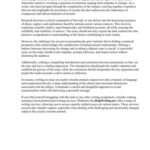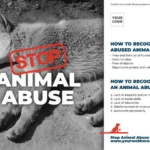Animal cruelty is a pervasive issue affecting countless creatures across the globe. Despite the advancements of modern society, the manifold reasons behind this moral aberration remain perplexing and alarming. Understanding why animal cruelty persists requires a multifaceted exploration of sociocultural dynamics, psychological factors, and systemic shortcomings that contribute to this tragic phenomenon.
At the heart of animal cruelty lies an entrenched disconnection between humans and animals. In contemporary urban settings, where the rapid pace of life often engenders detachment from the natural world, many individuals view animals as mere commodities or tools for profit and entertainment. This commodification fosters a troubling mentality that reduces sentient beings to mere objects devoid of intrinsic value. People might adopt a dispassionate stance toward animal welfare, believing that the needs and emotions of animals are secondary to human desires and conveniences. Such a perspective can lead a significant portion of society to prioritize personal gain over ethical obligations towards animals.
Moreover, educational systems frequently neglect to incorporate animal welfare into their curricula. Insufficient discussion around empathy, compassion, and the ethical treatment of animals perpetuates ignorance surrounding this issue. A lack of awareness can create a vicious cycle, where individuals grow up with little understanding of the moral imperative to advocate for those who cannot speak for themselves. By failing to instill a sense of responsibility in young minds, society inadvertently cultivates apathy toward animal suffering.
Furthermore, economic factors play an undeniable role in the perpetuation of animal cruelty. The demand for animal products remains alarmingly high, driven by industrialized agriculture. In factories, animals are often subjected to abominable conditions, condemned to lives devoid of freedom, and subjected to inhumane treatment in the name of mass production. This systemic cruelty is often veiled behind euphemisms and misleading marketing tactics that obscure their dire realities. Consequently, many are oblivious to the suffering inflicted on these animals, having been desensitized by a culture that prioritizes convenience over ethical considerations.
In stark contrast, the rise of animal rights advocacy movements has illuminated the plight of non-human beings. Organizations dedicated to the cause strive to shift societal attitudes, challenging the normalization of cruelty. Yet, these movements often encounter backlash, grounded in a pervasive resistance to change. Such opposition can stem from deeply ingrained cultural norms, religious beliefs, and an innate attachment to traditions that involve the exploitation of animals. The tension between these conflicting ideologies presents a formidable barrier to addressing animal cruelty effectively.
Moreover, psychological components contribute significantly to the persistence of cruelty. Research has indicated that individuals who engage in acts of violence towards animals often harbor maladaptive traits or unresolved emotional issues. These behaviors may stem from a desire for control, a need to exert power, or simply a reflection of internal turmoil. This nexus of psychological distress and cruelty can create a cycle, wherein the perpetrator inflicts pain on animals as a misguided means of coping with their own suffering. Alarmingly, there exists a considerable correlation between animal abuse and violence directed towards humans, highlighting a critical need for awareness and intervention.
Additionally, societal desensitization to violence against animals plays a pivotal role in minimizing the perceived severity of animal cruelty. In an age characterized by instant gratification and sensational media, the exposure to violence—be it through entertainment, news, or social media—can dull one’s sensitivity to suffering. Images of animal cruelty, while undeniably shocking, often fail to elicit a meaningful emotional response when presented in an overwhelming context of violence. This desensitization can foster complacency, allowing cruel practices to proliferate under the veil of societal acceptance.
Legislative frameworks for animal rights vary significantly across regions, with substantial gaps in protection and enforcement. In many areas, laws lack the necessary rigor to deter cruelty effectively, creating loopholes that allow abuse to continue unabated. Consequently, even when individuals may wish to report and address cruelty, inadequate legal structures leave them feeling powerless. Without robust protections and consequences for perpetrators, the institutional mechanisms designed to uphold animal rights remain frustratingly ineffective.
However, there is hope for transformative change. Raising awareness and promoting education surrounding animal welfare can ignite a shift in perspective. By encouraging empathy and fostering a deeper understanding of the sentience of animals, society can cultivate a generation of advocates passionate about ending cruelty. Additionally, supporting sustainable practices and ethical consumption can create a greater demand for humane treatment, thereby incentivizing industries to prioritize animal welfare.
In conclusion, the existence of animal cruelty in modern society is a multifaceted issue deeply rooted in cultural norms, economic structures, and psychological factors. By gaining insights into these dynamics—and fostering a compassionate perspective—we can work collectively to dismantle the systems that support such brutality. Through education, advocacy, and systemic reform, there is the potential for a profound shift in societal attitudes, culminating in a future where compassion reigns supreme, and the suffering of animals is unequivocally condemned. Ending animal cruelty is not merely an aspiration; it is a moral imperative that beckons for action.





